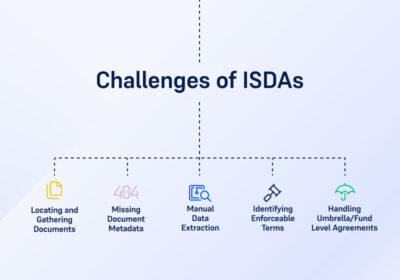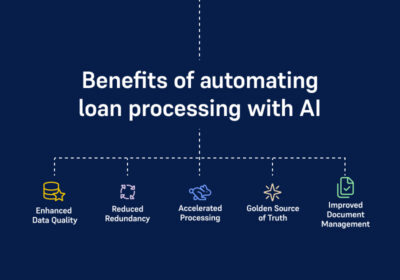Reimagine don’t reinvent: How to create a framework to effectively scale AI within your organization
Your leadership team is fully bought into using AI to accelerate, augment and automate business processes, but how does that vision become a reality across multiple business areas? How do in-house transformation and innovation teams translate that vision into a framework that helps them repeat successes and avoid pitfalls?
The business case for AI adoption
The business benefits of artificial intelligence are increasingly well-documented as case studies, market surveys, analyst reports, and other educational or promotional materials extolling the virtues of AI flood our news feeds and inboxes. In McKinsey’s most recent annual global survey on AI published in December 2022, 63% of respondents reported revenue increases attributable to their AI of 1% or more while approx. a quarter of respondents said at least 5 per cent of their organizations’ EBIT was attributable to AI in FY2021. From a cost perspective, 32% of survey respondents stated they had realized a cost saving of 1- >20% from their AI in FY2021.
Eigen customers are benefiting financially from implementing our AI platform to automate various document and data processing activities. A Total Economic Impact™ study performed by Forrester determined Eigen customers achieved an average return on investment (ROI) of 289% with a net present value (NPV) of $3.6m within a 6-month payback period. So, it’s proven that when AI is deployed effectively it contributes to your bottom line. And now, as a result, the conversation at many organizations has moved on from ‘How do we leverage AI to improve our processes?’ to ‘How do we maximize the value of our AI solutions?’.
Embedding AI into your organization
Before you try to scale AI across different areas of your business, you need to embed it successfully within one or two processes to test that solutions work and measure the impact. And all importantly, gather key learnings before you tackle more implementation projects. Ideally, you want to embed AI into a process where the benefits of doing so are expected to be significant from a revenue, cost, customer, or employee experience perspective. But also, where the implementation effort can be measured in weeks or months, not years.
This approach enables you to develop a blueprint for future implementations based on challenges specific to your organization as well as gather success metrics and determine the ROI so you can share this with senior execs and stakeholders. This blueprint, or playbook, makes each subsequent implementation easier and by tracking and sharing the results achieved you can educate the wider business on what’s possible (and what’s not) through the adoption of AI.
Driving the change program forward
As humans, we fear change when we can’t predict an outcome. By sharing internal success stories, quantitative and qualitative results, ROI, and your AI implementation playbook, you eradicate some of the fear. Even those stakeholders most resistant to change will find it hard to argue with the facts or find fault with plans that are tried and tested within the business. Many of us are also afraid of failure, so identifying what could go wrong during the implementation phase based on previous experience and documenting ways to solve those issues will help to allay such fears.
As well as the psychological barriers, there are also the practical matters of agreeing on what to change and how and when. This is where stakeholder buy-in and domain expertise are essential to success. To identify and prioritize the processes where AI can make the biggest impact, you need to work with the teams who own the various parts of them to understand the inefficiencies and opportunities, the issues these cause for customers (both internal and external) and the team members themselves.
Reimagine processes and address root causes
To truly maximize the ROI of your AI solutions extend your discovery work into upstream, downstream and adjacent processes where there are likely to be interrelated problems and opportunities. For example, speak to stakeholders to understand how operational improvements and better-quality data collected during the loan onboarding process can also benefit loan origination and loan servicing/monitoring processes.
It’s also important to dig into the ‘why’ behind the process pain points and recurring issues to get to the root cause. You don’t want to reimagine a streamlined end-to-end process with AI plugged in to automate certain activities when the common points of failure lie elsewhere. Root cause analysis can help you identify systemic organization-wide challenges such as document management issues and informational gaps or silos that once solved can unlock value for the business as a whole. Once you fully understand the problems and root causes, or the opportunity and potential impact and can marry that to a tried and tested AI solution you are on to a winning framework.
Eigen’s AI-powered solutions and intelligent document processing capabilities provide financial services, insurance and supply chain companies with the ability to quickly and accurately extract, classify and interpret virtually any information from any document to make smarter business decisions, eliminate manual processing and optimize data flow. Request a demo and learn about the ways we work with innovation, transformation and center of excellence teams to automate, accelerate and augment business processes that are ripe for improvement.

-
World Economic forum 2020
-
Gartner Cool Vendor 2020
-
AI 100 2021
-
Lazard T100
-
FT Intelligent Business 2019
-
FT Intelligent Business 2020
-
CogX Awards 2019
-
CogX Awards 2021
-
Ai BreakThrough Award 2022
-
CogX Awards Best AI Product in Insurance
-
FStech 2023 awards shortlisted
-
ISO27001
-
ISO22301
-
ISO27701
-
ISO27017
-
ISO27018


















